Newsletter
Alphabet Soup – Making Sense of the Abbreviations in DLA DIBBS, FBO, and the WebFLIS Fedlog Websites
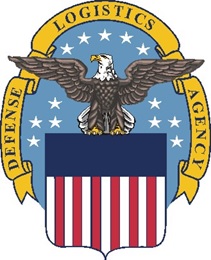
DLA - DIBBS and WebFLIS Fedlog Are Tools Provided by the Defense Logistics Agency
Let's be honest. The WebFLIS, FBO, and DIBBS sites are full of abbreviations such as NSN, CAGE code, BAFO, WAWF, and many more. Sometimes it feels to less experienced government contractors that they are sifting through alphabet soup. Even experienced government contractors can get the acronyms jumbled up sometimes. The very names WebFLIS, FBO, and DLA DIBBS don't make a lot of sense to a lay person without a way to decode them. This month, we are going to spell out what all of the common abbreviations mean, and why they are important to securing a government contract. First let's look at the three sites where you are most likely to encounter all of these acronyms – FBO, DIBBS, and WebFLIS.
What is DIBBS?
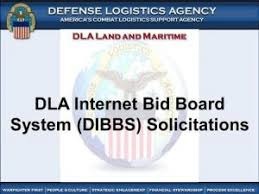
DLA DIBBS
The DLA DIBBS tool is the tool of choice for the Defense Logistics Agency to handle procurement. DIBBS, the DLA Internet Board System "is a web-based application that enables the vendor community to search for, view, and submit secure quotes on RFQs. Through DIBBS, users can search for and view RFPs, IFB Awards, and other procurement information." DIBBS is the hub through which 85% of DLA’s solicitations flow. Food, uniforms, munitions, medical supplies, replacement parts, fuel and other equipment constitute the majority of the procurement. The DIBBS is intended to be the center point for perspective government contractors, but many of our clients report frustration with DIBBS. Among the more common complaints is difficulty in sorting RFQs and RFPs to find the most relevant opportunities, difficult in matching drawings or part numbers with open contracts, and a more general frustration about how time consuming DIBBS can be. You can learn more about DIBBS here.
What is WebFLIS?
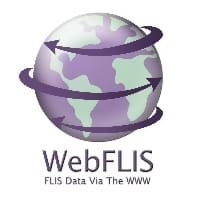
DLA WebFLIS Pubic Search Site
WebFLIS is an abbreviation for Web Access to the Federal Logistics Information Service. The FEDLOG (Federal Logistics Database), is a set of data set published by the DLA (Defense Logistics Agency). According to the DLA, "it can be used by engineering, technical research, provisioning, procurement/contracting, supply, cataloging, maintenance, distribution, storage, transportation, quality assurance and disposal personnel to retrieve management, part/reference number, supplier, Commercial and Government Entity (CAGE), freight, Interchangeability and Substitutability (I&S) and characteristics information recorded against National Stock Numbers (NSNs). FED LOG also provides service unique data for additional search capabilities...The WebFLIS service from the Federal Logistics Information Service (FLIS) of the Defense Logistics Agency (DLA) is an online search system for several public segments of the USA Federal Logistics Database for codified supplies that are represented by a permanent National Stock Number (NSN)." Every federal agency and department has the ability to utilize FEDLOG to manage their procurement and supply chain. Procurement agents and government contractors alike find the website useful, because WebFLIS has useful search and filtering capabilities. If you know specifically what you are looking for the WebFLIS site has an "NSN Center" that allows you to search by
- Part Number
- NSN (National Stock Number)
- NIIN
- CAGE Code
- Keywords
- Characteristics
- Other Parameters
The WebFLIS tool, perhaps due to it's unusual name, is often called by other names. In the contracting community, the following terms are often used interchangeably with WebFLIS: iNSN Search, NSN Lookup, Assist Quick Search, FEDLOG Online, WebFLIS Public Search, WebFLIS DLA, WebFLIS Navy, WebFLIS Army, WebFLIS USMC and WebFLIS Airforce. Each military branch does not have their own version of the WebFLIS site. Click here to learn more about WebFLIS.
What is FBO?
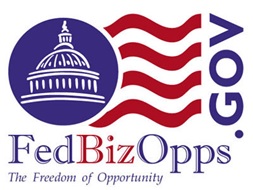
FedBizOpps
FBO is FedBizOpps, of Federal Business Opportunities. FedBizOpps is the GSAs primary point of entry for federal government procurement opportunities over $25,000. Government procurement agents from any department or agency are able to publicize their business opportunities by posting information directly to FedBizOpps via the Internet. Understand that fbo.gov was set up by the government for buyers (procurement agents), first and foremost. It was not built around the needs of vendors (government contractors). As such, our clients report a great deal of frustration with the FBO interface. Click here to learn more about FBO.
There has to be an Easier Way
Perspective government contractors are not just frustrated by the limitations of these websites. They are also frustrated by the fact that government contracts are dispersed across a number of
not-terribly-user-friendly websites. This requires them to become the master of several systems, instead of just one. It also wastes an inordinate amount of time. There has to be a better way.
There is. The Govgisitcs database combines the contracting opportunities from several government websites into a single portal. These opportunities are easily sorted in multiple ways. PartsBase Government Data
makes it easier to cross-match drawings. PartsBase Government Data makes it easier to look at bid history, so you know the prices paid on past contracts, so you can identify trends and stay competitive.
PartsBase Government Data has a dedicated team of experienced, knowledgeable professionals to help you be more efficient and more successful in pursuing government contracts. No wonder that our clients report
landing more contracts and saving from 20% to up to 90% of the time they used to spend identifying the best bid opportunities.
Government Contracting Abbreviations and Acronyms
8(a) Program
Created in 1974, the 8(a) program helps minority-owned and other small businesses to grow through federal contracting preferences and "set-asides."
BAFO - Best and Final Offer
This is a contractor's final offer following the conclusion of discussions/negotiations, applying primarily to RFPs and other negotiated contracts.
BOA - Basic Ordering Agreement
A BOA is a written agreement, negotiated between a federal government procurement agent and a government contractor, that contains (1) terms and clauses applying to future contracts between the parties during its term, (2) a description of supplies or services to be provided, and (3) methods for pricing, issuing, and delivering future orders under the basic ordering agreement. A basic ordering agreement is not a contract, but rather a mutual understanding of the direction the relationship is headed that governs future contracts.
BPA/BPO - Blanket Purchase Agreement/Blanket Purchase Order
BPA and BPO are often used interchangeably. Each is an arrangement under which a federal government procurement agent contracts with a government contractor to provide goods or services on an "as-required and over-the-counter" basis. This arrangement typically sets a limit on the period of time it is valid and the maximum amount of money that may be spent at one time or within a specified period. (read more...)
CAGE Code - Commercial and Government Entity Code
A CAGE code is a five-digit alpha-numeric identifier assigned to entities located in the United States and its' territories, and used extensively within the federal government and administered by the DLIS (Defense Logistics Information Service). A CAGE Code is required to do government contracting. To get a CAGE code, you must first be registered in SAM. You'll be assigned your CAGE code after completing the SAM validation process. CAGE codes are intended to streamline the process of communicating and doing business with government agencies, so you can concentrate on winning federal government contracts. The DLA CAGE Program Office is the only authorized source for U.S. CAGE Codes.
CO - Contracting Officer
A CO is a government agent with the authority to create, administer, and/or terminate contracts and make related determinations.
COR/COTR Contracting Officer’s Representative/Contracting Officer’s Technical Representative
Though COR and COTR are often used interchangeably, there is a slight difference. Most financial and contract experts are considered CORs and most technical experts in other fields are considered COTRs. The COTR and COR are assigned by the CO to assist in administering specific aspects of a contract. Normally CORs and COTRs have the most contact with the contractor and are the primary liaisons between the contractor and the contracting officer. Contracting officers rely on the expertise and background of the COTR and COR to ensure that the technical and financial aspects of the contract are met.
CAS - Cost Accounting Standards
CAS are accounting standards designed by the GAO (General Accountability Office) to achieve uniformity and consistency in the measurement, and allocation of costs to Government contracts. CAS does establish limits and constraints on what is considered appropriate, allowing the CAS to meet the goal of providing consistency and uniformity in cost accounting.
CPFF - Cost Plus Fixed Fee
A CPFF is a cost-reimbursement contract that provides payment to the contractor of a negotiated fee that is fixed in the contract. The fixed fee does not vary with actual cost, but may be adjusted as a result of changes in the work to be performed under the contract.
DIBBS - Defense Logistics Agency Internet Bid Board System
DIBBS is an online procurement tool used by the DLA (Defense Logistics Agency) which provides automated access to 85% of DLA’s solicitations.
DLA – Defense Logisitics Agency
The agency which provides consumable resource procurement for the Department of Defense, such as food, uniforms, munitions, medical supplies, replacement parts, fuel and other equipment.
DUNS - Data Universal Numbering System
A DUNS number is a unique nine-character identification number required of parties interested in contracting with the federal government. The numbers are distributed by the private company Dun & Bradstreet (D&B). Contractors must have a different 9-digit D-U-N-S number for each unique physical location, as well as each legally distinct division that may be co-housed at the same address or location. DUNS numbers are provided free of charge.
DVBE - Disabled Veteran-owned Business Enterprise
1. A small business concern
- That is at least 51 percent owned by one or more disabled veterans; or, in the case of any publicly owned business, at least 51 percent of the stock of which is owned by one or more disabled veterans; and
- Whose management and daily business operations are controlled by one or more disabled veterans
FAR Federal Acquisition Regulations
The FAR is a set of regulations which constitute the primary source of authority governing the government procurement process. The FAR, which is published as Chapter 1 of Title 48 of the Code of Federal Regulations, is prepared, issued, and maintained under the joint auspices of the Secretary of Defense, the Administrator of General Services Administration, and the Administrator of the National Aeronautics and Space Administration.
FAS Federal Acquisition Service
The FAS provides federal customers with the products, services, and programs to meet their supply, service, and procurement needs under the auspices of the GSA. It provides a source for virtually every commercial product or service a federal agency might need.
FEDLOG - Federal Logistics
FED LOG data gives perspective government contractors the ability to access FLIS (Federal Logistics Information System) data from the DLA (Defense Logistics Agency) through WebFLIS.
FLIS - Federal Logistics Information Service
FLIS or WebFLIS is an online search system for several public segments of the FEDLOG Database for codified supplies that are represented by a permanent NSN.
FPDS - Federal Procurement Data System
The FPDS is the central repository of statistical information on federal contracting. The system contains detailed information on contract actions over $25,000 and summary data on procurements of less than $25,000 and is maintained by the GSA.
FSC Codes/PSC- Federal Supply Class Codes/Product Supply Codes
PSC and FSC codes are used interchangeably, and are codes that are used to group products into logical families for supply management purposes.
GSA - General Services Administration
The GSA is the centralized federal procurement agency. It acquires office space, equipment, telecommunications, information technology, supplies and services for federal departments and agencies. GSA "provides services and solutions for the office operations of over 1 million federal workers located in more than 9,000 government-owned and leased buildings in 2,000 US communities."
GWAC - Government-wide Acquisition Contract
GWACs are defined in the FAR as "task orders or delivery order contracts for information technology established by one agency for government-wide use."
HUBZone - Historically Underutilized Business Zone
The HUBZone Empowerment Contracting program provides federal contracting opportunities in distressed areas.
IDIQ - Indefinite Delivery Indefinite Quantity
Also known as multiple award contracts, an IDIQ contract provides a broad range of support services and resources for administrative, research, development and operational activities. This is a kind of contract that provides an estimated ceiling dollar amount, although the dates of purchase and the quantity of service or product are not specified.
IFB - Invitation For Bid
An IFB is the bidding method used for the sealed bid process. An IFB typically includes a description of the product or service, instructions for preparing a bid, the conditions for purchase, a deadline, and payment parameters.
NAICS - North American Industrial Classification System
The NAICS replaced the old SIC (Standard Industrial Classification) system, as the industry classification system used by the statistical agencies of the United States. According to the GSA, "the NAICS codes are used as a categorization system within contracting data to give a higher level of detail about the type of economic or industrial output being done under a contract. These codes were created jointly by the United States, Canada, and Mexico, and are assigned by the federal government according to the NAICS."
NCAGE Code - North Atlantic Treaty Organization Commercial and Government Entity Code
An NCAGE is a five-character alpha-numeric identifier assigned to entities located OUTSIDE of the U.S. and its' territories specifically for use on NATO member-State defense projects.
NSN - National Stock Number
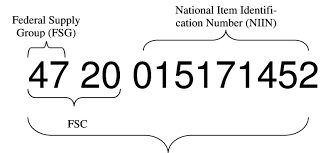
NSN Code Lookup Configuration
A NSN is the official label applied to an item that is repeatedly procured, by the federal supply system. It is a unique item identifying series of numbers. Data is tracked using the NSN. NSNs are an essential part of the military's logistics supply chain used in managing, moving, storing, and disposing of material. The use of NSNs facilitates the standardization of item names, supply language, characteristics and management data and aids in reducing duplicate items in the federal inventory. It also helps to standardize the military requirements for testing and evaluation of potential items of supply, as well as identifying potential duplicate items. NSNs are used to identify and manage nearly every item the government procures. See a sample NSN lookup here.
OSDBU - Office of Small and Disadvantaged Business Utilization
OSDBU serve as small business advocates within a government agency. These are vital allies to small businesses trying to secure government contracts. OSDBU’s main responsibility is to ensure procurement opportunities for small businesses and other 8a program businesses.
PPIRS - Past Performance Information Retrieval System
PPIRS is the contractor performance information, based on past contracting.
PBA - Performance-Based Acquisition
A PBA acquisition is structured around the results to be achieved, as opposed to the manner by which the work is to be performed. This is an important consideration in a government contract.
PWS - Performance Work Statement
A PWS describes the required results specific and objective terms with measurable outcomes, and is often associated with PBAs.
RFA - Request for Application
An RFA is a formal opportunity to apply for a grant. RFAs are issued by the government and foundations, and are often useful for contractors trying to develop new technologies or methodologies.
RFB - Request for Bid
An RFB is a contract opportunity in which the terms, conditions, and specifications are described and responses are not subject to negotiation.
RFP- Request for Proposal
An RFP is a contract opportunity in which the terms, conditions, and specifications are described and responses are subject to negotiation. An RFP outlined a government agency’s requirements and the criteria for the evaluation of offers.
RFQ - Request for Quote
An RFQ is the government's way of exploring the financial feasibility of a procurement. Technically, the government is only considering the possibility of acquiring a product or service, though most RFQs lead to procurement contracts. A response to an RFQ by a prospective contractor is not considered an offer, and consequently, cannot be accepted by the government to form a binding contract.
SAM - System for Award Management
SAM is the primary vendor database for the federal government. Any perspective government contractor must be registered in SAM.
SBA - Small Business Administration
The SBA assists small businesses in securing government contracts. SBA programs now include financial and federal contract procurement assistance, management assistance, and specialized outreach to women, minorities and armed forces veterans.
SDVBO - Service Disabled Veteran-Owned Business
1. A small business concern
- That is at least 51 percent owned by one or more service disabled veterans; or, in the case of any publicly owned business, at least 51 percent of the stock of which is owned by one or more service disabled veterans; and
- Whose management and daily business operations are controlled by one or more service disabled veterans
VOB - Veteran-Owned Business
1. A small business concern
- That is at least 51 percent owned by one or more veterans; or, in the case of any publicly owned business, at least 51 percent of the stock of which is owned by one or more veterans; and
- Whose management and daily business operations are controlled by one or more veterans
WAWF - Wide Area Workflow
WAWF is the primary government invoicing and payment platform. WAWF creates a virtual folder to combine the three documents required to pay a Vendor the Contract, the Invoice, and the Receiving Report. T
WebFLIS – Website for Federal Logistics Information System
WebFLIS stands for Web Access to the Federal Logistics Information Service's database. This data base, FEDLOG (the Federal Logistics database) provides users with the ability to access FLIS (Federal Logistics Information System) data of the US Government's Department of Defense (DOD) online.
WOSB - Women-Owned Small Business
1. A small business concern
- That is at least 51 percent owned by one or more women; or, in the case of any publicly owned business, at least 51 percent of the stock of which is owned by one or more women; and
- Whose management and daily business operations are controlled by one or more women
Conclusions: Key Take-Aways About Webflis and DIBBS
As you can see, there is a lot more to the WebFLIS Fedlog and the DLA DIBBS site than just nsn lookups. Hopefully, this acronym guide will help you get a better handle on the most common abbreviations found on government contracting websites. However, if you have any questions about WebFLIS, DLA, DIBBS, or government contracting in general, please don't hesitate to contact your Govgistcs rep today.